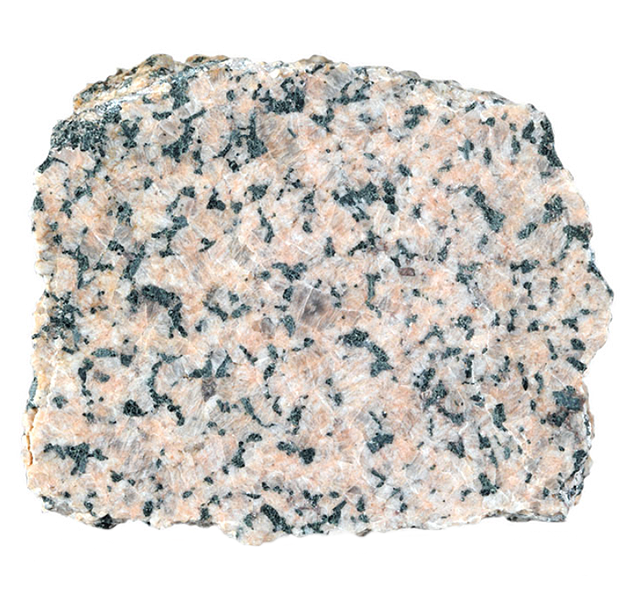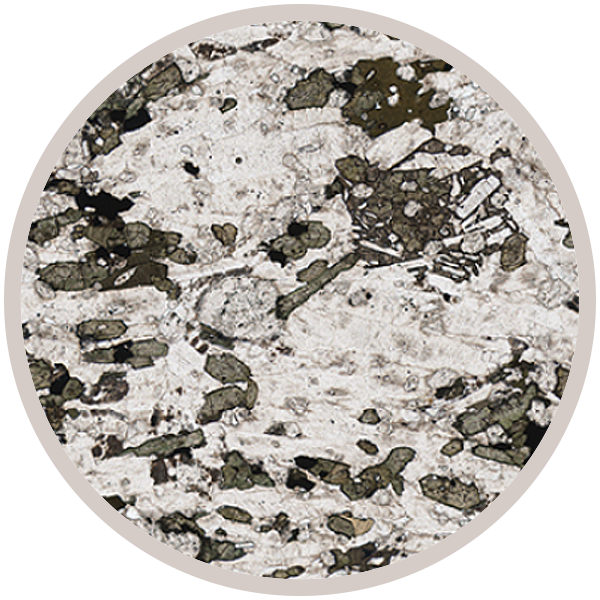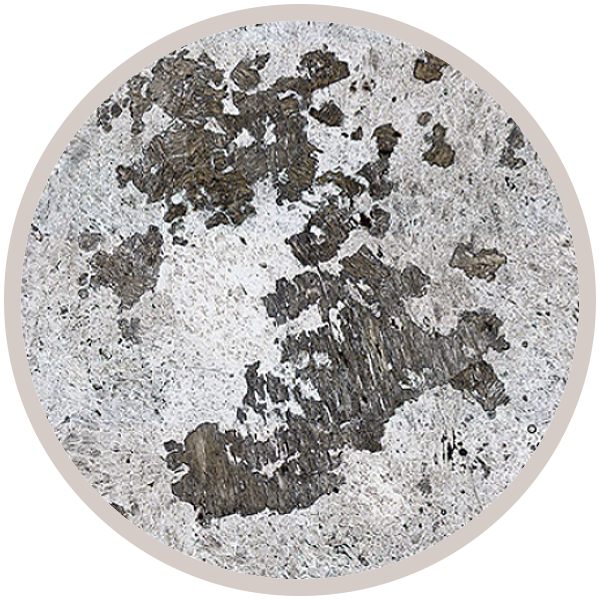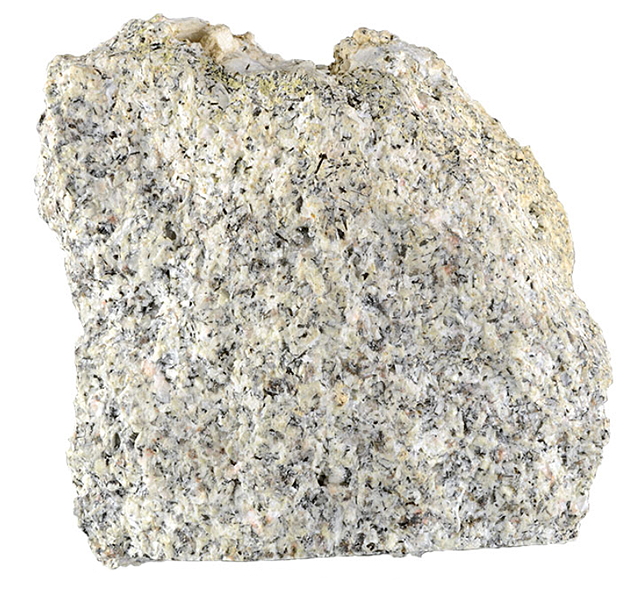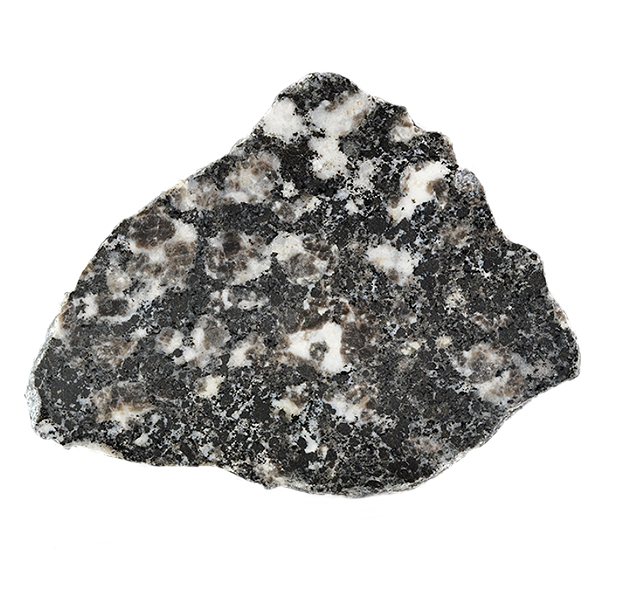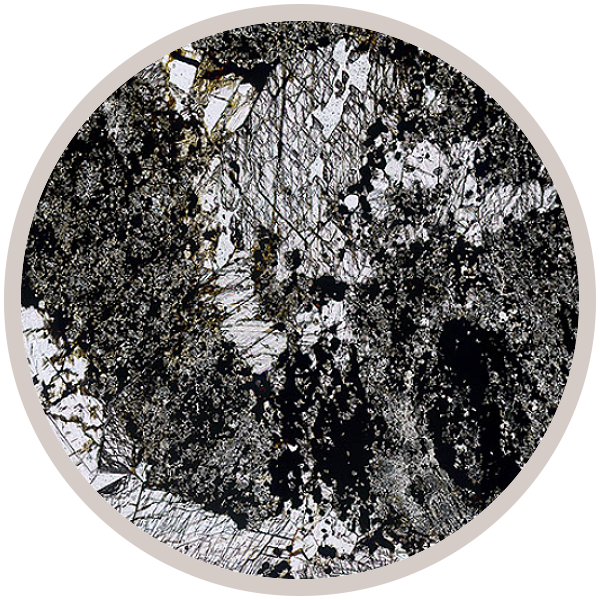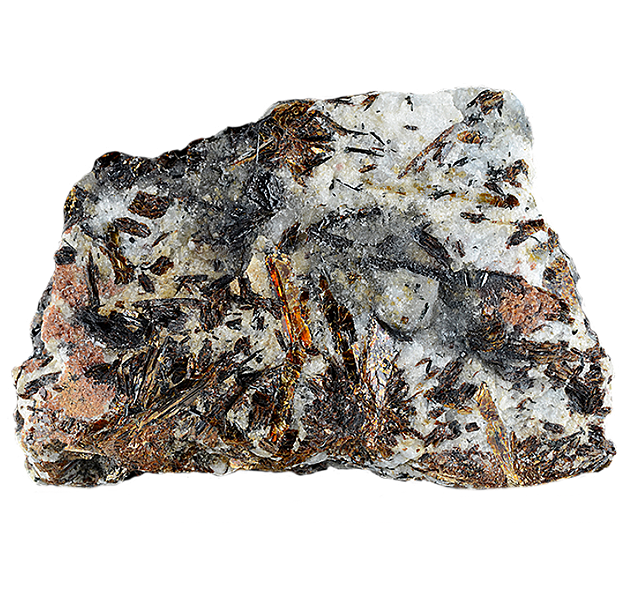
Fact sheet
The astrophyllite deposit from which this sample came is located on the southern slope of Mount Eveslogchorr, south of Murmansk. It is related to zones of albitization of gneissose foyaite and aegirine-nepheline-microcline veins cutting foyaite. The astrophyllite content of the veins and albitites is very variable, from 10 up to 80 vol.%. The veins are 0.5 cm to 7 metres wide and are observed for 10–150 metres along strike.
The astrophyllite is found in the central parts of the veins as radiating, parallel-columnar, sheaf-like and large-lamellar aggregates of bronze-brown, golden-yellow, greenish-brown and dark brown flattened-prismatic crystals. It occurs in association with aegirine, eudialyte, rinkite, sodalite, cancrinite, loparite-(Ce) and pyrochlore.
Rotation 1 - twinned microcline K(AlSi3O8)
Rotation 2 - melilite CaNaAl(Si2O7) with albite, three altered nepheline crystals and a small aegirine lath
Rotation 3 - rosenbuschite Na6Ca6Zr3Ti(Si2O7)4O2F6
Rotation 4 - natrolite Na2Al2Si3O10·2H2O replacing nepheline
Rotation 5 - astrophyllite (Na,Mn2+)3(Sr,Na)2(Ti,Fe3+)3(Si2O7)2O2(OH,O,F)2
Rotation 6 - pink eudialyte Na15Ca6(Fe2+,Mn2+)3Zr3[Si25O73](O,OH,H2O)3(OH,Cl)2
Rotation 7 - basal sections of aegirine NaFe3+Si2O6
Rotation 8 - altered nepheline (Na,K)AlSiO4
Rotation 9 - lamprophyllite (Na,Mn2+)3(Sr,Na)2(Ti,Fe3+)3(Si2O7)2O2(OH,O,F)2
Rotation 10 - lamprophyllite (Na,Mn2+)3(Sr,Na)2(Ti,Fe3+)3(Si2O7)2O2(OH,O,F)2
Rotation 11 - loparite-(Ce) (Na,Ce,Ca,Sr,Th)(Ti,Nb,Fe)O3
The Ilimaussaq alkaline complex is the type locality for agpaitic nepheline syenites and represents an enormous concentration of rare elements, notably Li, Be, Nb, Zr, REE, Y, Th and U. Around 220 mineral species have been identified. We can't identify all the minerals present in these samples. Email us at virtual-microscope@open.ac.uk if you can help.
Note we have recently expanded the collection to include other syenite complexes worldwide.
See also Alex Strekeisen's great website for more information on syenite complexes.
Sample details
More from this collection
